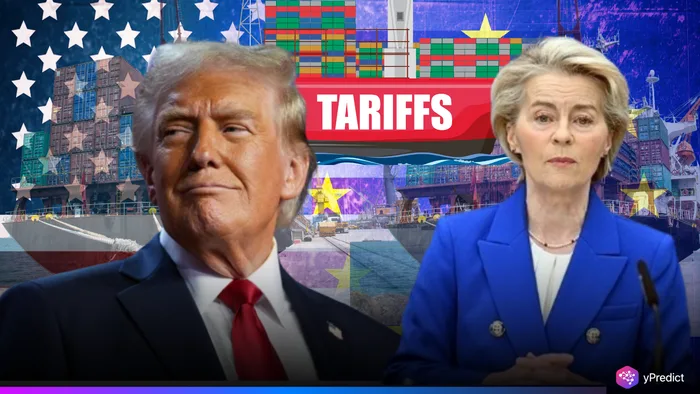
The European Union plans to impose a 30 percent tariff on many US products if no deal is made by August 1. Talks between the two sides have dragged on for months without resolution. Brussels now appears ready to act, targeting major US exports like machinery, chemicals, and farm goods. Frustration is growing as negotiations stall and the deadline nears.
This trade move could trigger new tensions between the US and EU. While leaders from both regions speak of cooperation and free trade reform, progress remains limited. Both sides continue to offer subsidies and explore digital service taxes, but without real diplomatic coordination. As the August deadline looms, industries on both continents brace for disruption and rising costs.
Why the EU Is Escalating Pressure on the US
The threat of EU tariffs on US products, did not surface in a vacuum. Brussels has become more and more aggravated with the US’s lack of willingness to compromise on significant policy questions. In the meantime, European leaders have accused the US of not addressing unfair advantages it granted American companies through subsidies and lax climate rules, and the EU is also worried about the Biden administration’s reluctance to move forward with resolving disputes about digital services taxes that have a direct impact on revenues of major European tech firms.
These feelings of grievance have pushed EU policymakers to take a bolder stance. By announcing a deadline and a specific tariff number, the bloc is hoping to get the US back to the negotiating table. European officials feel that if they demonstrate strength now, it increases their leverage in the final stages of negotiations.
What Could Be Affected by a 30 Percent Tariff?
If the EU implements its proposed 30% tariffs on US goods, the impact on American exporters will be sharp and immediate. These tariffs target dozens of sectors, including heavy machinery, industrial parts, and food and beverage products. US companies that depend on European sales will likely face demand drops. The scale of those losses remains uncertain, but they will be noticeable.
Agricultural exports from the US will feel the biggest blow. Tariffs on soybeans, corn, and milk will rise sharply. This will make US products less competitive compared to offers from other regions. Rural US economies, already strained by inflation and supply chain issues, will suffer even more. In the EU, companies will pass the higher import costs on to consumers. That will only worsen inflation across European markets.
What’s Holding Back a Trade Deal?
After months of negotiation, the US and EU continue to be divided on significant issues. The US remains opposed to EU requests for tougher environmental obligations for goods exported from Europe to North America because it will harm domestic producers. The issues around digital tax heavily inform the negotiations, and the US and EU have fundamentally different views. The EU wishes to capture a fair share of tax from major American tech companies doing business in Europe, while the US sees these digital taxes as targeting American companies.
Both sides are also suffering from political pressure. Nearing the US election and with EU’s population becoming wary of American trade dominance, compromise is harder. Political ambitions in both domestic governments need to be addressed, and while the two economies would benefit from rights to trade freely, internal politics will make this difficult.
Global Impact of the Transatlantic Trade Dispute
The US-EU trade dispute threatens more than just bilateral relations. A trade conflict between two of the world’s largest economies would have ramifications for supply chains across the globe. If the US and EU increase tariffs on each other’s goods, other trading countries may also modify their economies based on any tariffs that are set. This is increased uncertainty on global markets.
Furthermore, if smaller nations are reliant on both the US and EU, they could suffer from this trade conflict even if they are left out the dispute. Trade diversions, increased costs, and shipping delays could undermine economic growth in a developing economy. Investors are sitting closely on this standoff, as another global trade war would further shore up the equity and commodity markets which are already precarious due to inflation and geopolitical challenges.
What Happens If No Deal Is Reached by August 1?
If both sides fail to reach a deal, the EU will start tariffs immediately after the deadline. This would sharply escalate the US-EU trade dispute. Washington could respond with matching tariffs on European goods. The Biden administration has not confirmed any list yet. However, trade analysts expect the US to hit key EU exports.
These moves risk starting a longer trade war that could hurt economic growth. It may also weaken global trade partnerships. The EU still shows willingness to negotiate until the final moment. European leaders want some flexibility from Washington before the deadline. Whether both sides strike a deal or not will shape economic trends for the rest of the year.







